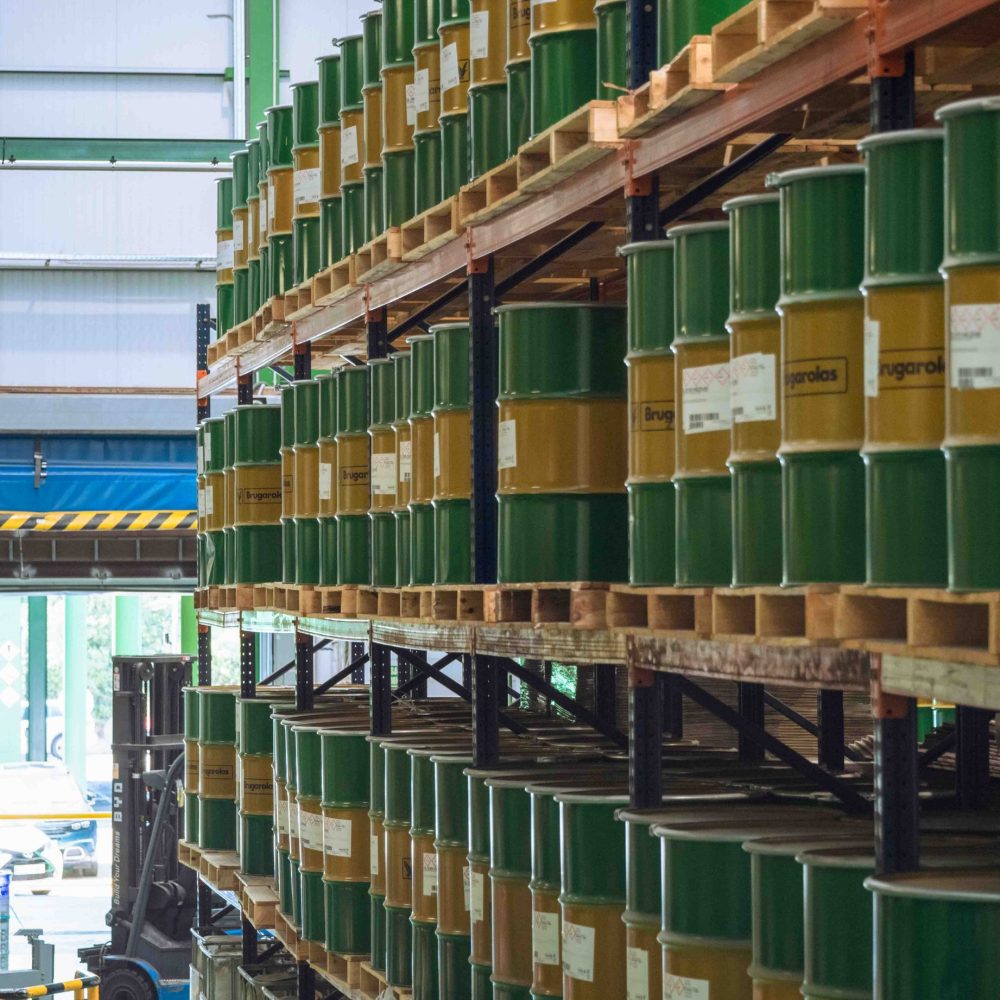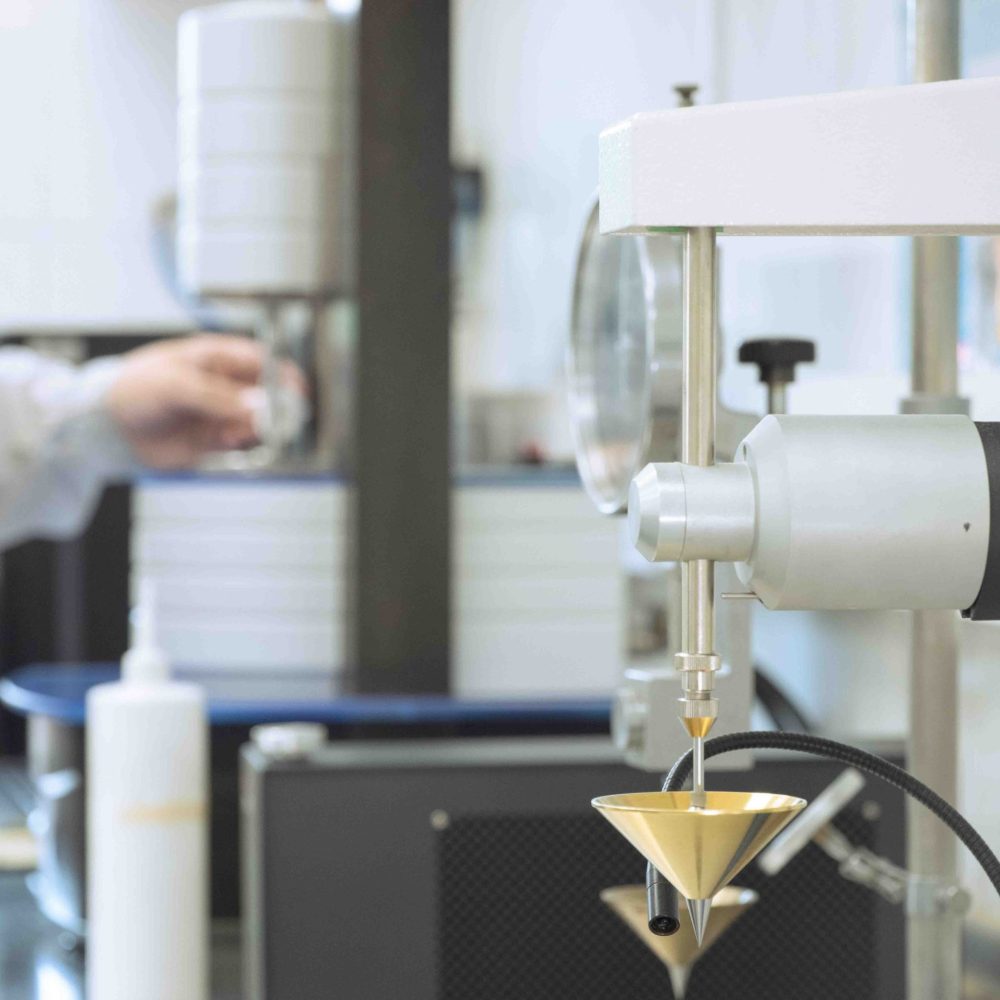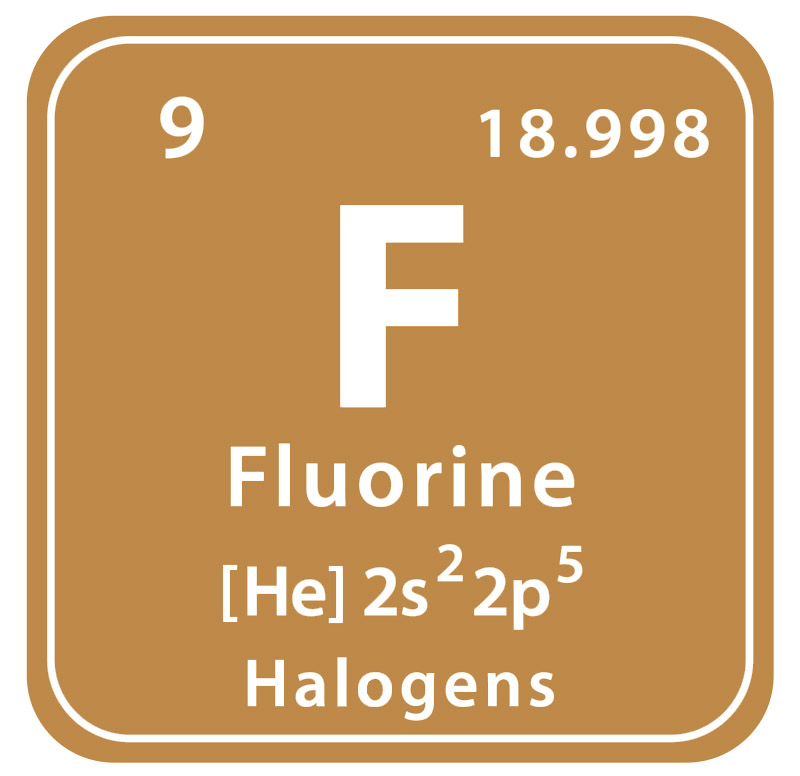Specialty Chemicals
Concept: PFAS
Per- and polyfluoroalkyl substances (PFAS) are a group of synthetic fluorinated organic chemicals that encompass a wide range of compounds—numbering in the tens of thousands*—such as PFSAs, PFCAs, PFOA, PFOS, PFBS, and more. PFAS compounds are known for their resistance to oil, water, stains, and radiation, as well as their excellent thermal conductivity, low volatility in vacuum environments, low dielectric constant, and low refractive index. These properties make them widely used in textiles, insulation materials, firefighting foams, non-stick coatings, and more. Today, PFAS are applied across dozens of industries including packaging, semiconductors, medical devices, automotive, aerospace, and biotechnology.
In everyday life, PFAS can be found in non-stick coatings such as PTFE used in cookware. When used in fried food packaging, PFAS prevent oil from seeping through paper bags or boxes, keeping your hands clean. On clothing, PFAS provide excellent stain resistance—many well-known outerwear and footwear brands use PFAS-based coatings to create breathable, warm, waterproof, and stain-repellent fabrics.
PFAS are defined as “fluorinated substances that contain at least one fully fluorinated methyl or methylene carbon atom (i.e., a carbon atom on which all the hydrogen substituents have been replaced by fluorine atoms, and which is not attached to any hydrogen, chlorine, bromine, or iodine atoms). In practice, with few exceptions, any chemical containing at least one perfluoromethyl (–CF₃) or perfluoromethylene (–CF₂–) group is considered a PFAS.”
This definition is provided by the Organisation for Economic Co-operation and Development (OECD), which—along with the U.S. Environmental Protection Agency (US EPA)—classifies thousands of substances* as PFAS.
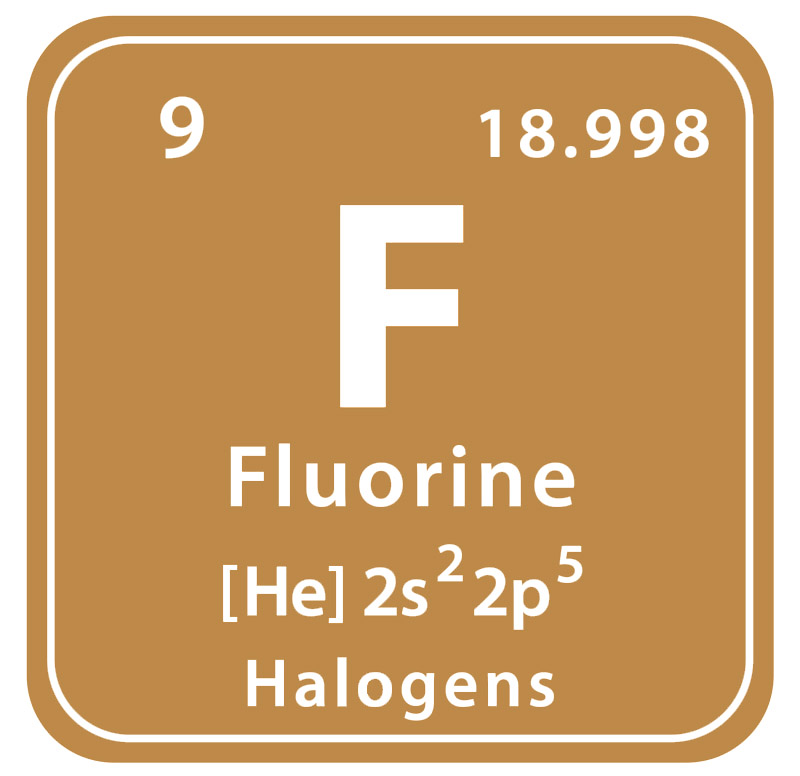
New regulations in states like California and New York define PFAS more broadly as “fluorinated organic chemicals containing at least one fully fluorinated carbon atom.”
Currently, the definitions of PFAS used by the OECD, US EPA, and individual U.S. states are not fully harmonized. Industry and regulatory discussions typically adopt the broader definition of PFAS, recognizing the full family as encompassing tens of thousands of substances*.
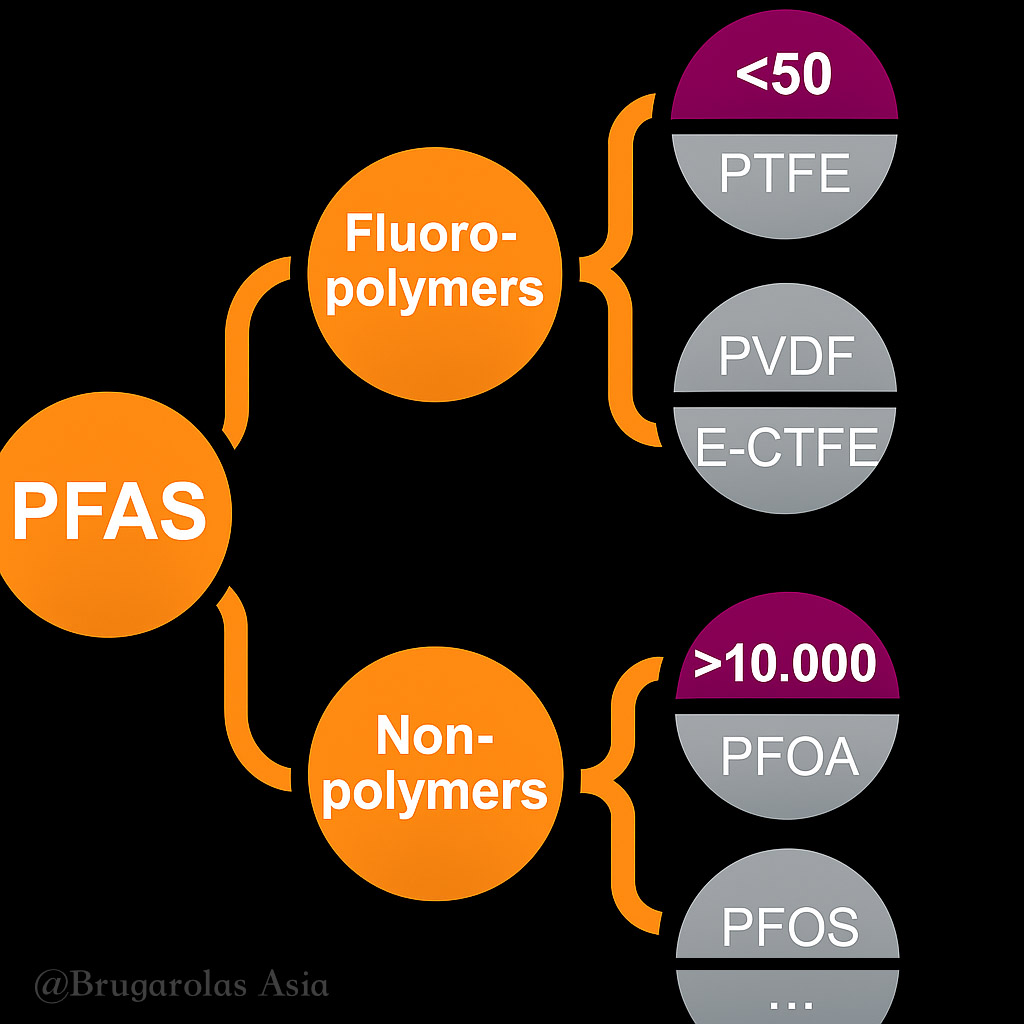
PFAS is a big family. True.
- In this chart, you will see a simplified classification of PFAS, dividing them into fluoropolymers and non-polymers. The fluoropolymer category includes commonly known substances such as PTFE, PVDF, and E-CTFE. On the other hand, the non-polymer category includes PFOA, PFOS, and tens of thousands of other substances.
“<50” in fluoropolymer indicates that this category of substances (e.g., PTFE, PVDF, E-CTFE—fluoropolymers) is currently known to include fewer than 50 compounds or has very limited toxicological or regulatory data. This often suggests that these fluoropolymers are considered to pose lower potential risk and are less frequently detected in the environment.
“>10.000” in non-polymer refers to non-polymer PFAS substances (e.g., PFOA, PFOS), which are known to include over 10.000 identified compounds. These are widely present in the environment and have extensive data on toxicity, bioaccumulation, and persistence, making them the primary focus of global regulations and restrictions.
PFAS is harmful?
With new findings from research over the past decade, many substances within the PFAS family—such as PFOA and PFOS—have been found to potentially pose long-term health risks. These include possible endocrine and metabolic disruption, increased cholesterol levels, adverse effects on the immune system, and a potential link to cancer**, depending on the PFAS concentration (including extremely low levels) and the duration of human exposure.
PFAS are often referred to as “forever chemicals” because they contain carbon-fluorine bonds—one of the strongest single bonds in chemistry—making them highly resistant to degradation and extremely persistent in the environment. Due to this environmental persistence and their widespread harmful characteristics, regulatory agencies around the world are increasingly tightening controls on all types of PFAS, no longer limiting regulation to only specific subgroups or individual compounds.
PFAS free lubricants
Just like the well-known RoHS regulation, future PFAS restrictions may gradually take effect in your industry. When that happens, your exported products will be required to meet PFAS-Free standards—meaning non-detectable PFAS (N.D. PFAS) levels.
For example, the Toxics in Packaging Clearinghouse (TPCH) in the United States prohibits the presence of PFAS in packaging materials. The state of Maine has also passed legislation to phase out PFAS beginning in 2023, with a full ban on products containing PFAS set to take effect in 2030.
To better understand the domestic manufacture (including import), use, workplace exposure, environmental and human health impacts, and waste management of PFAS, the U.S. Environmental Protection Agency (EPA) issued the PFAS Reporting and Recordkeeping Rule (40 CFR Part 705) on October 11, 2023. It requires any company that manufactures or imports PFAS or PFAS-containing products in the U.S. to submit a one-time report covering PFAS-related activities between January 1, 2011 and November 23, 2023, specifying each PFAS substance used or produced per year.
For general manufacturers or importers, the reporting period is from November 12, 2024 to May 8, 2025 (including R&D entities using ≤10 kg/year for scientific purposes only). For importers of articles (finished products), the deadline is extended to November 12, 2024 to November 10, 2025. This also applies to small businesses with annual sales under USD 12 million, or under USD 120 million with annual PFAS production/import under 100,000 lbs. A simplified reporting method is available. All submissions must be made online via the EPA CDX system: https://cdx.epa.gov/
In addition, individual companies are implementing PFAS management policies beyond regulatory requirements. For example, Apple requires suppliers to disclose or restrict substances containing “–CnF₂n–” units above a certain ppm threshold. IKEA has also announced that PFAS-based coatings are prohibited from being used in IKEA furniture.
Brugarolas offers a range of PFAS-Free lubricant products, suitable for compliance with U.S. (including California and Maine) and EU export regulations. If you are unsure whether your current lubricant contains PFAS, feel free to contact our technical engineers for a free consultation and evaluation.
Brugarolas: Innovation. Lubricat. Future.
